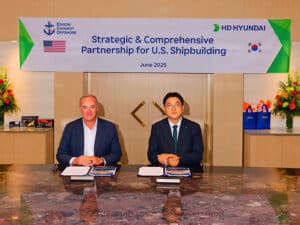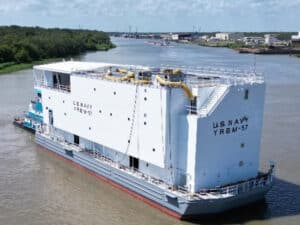
EC plans to provide €6.5 million to retrain redundant Danish shipyard workers
Written by Nick Blenkey JUNE 4, 2012 — The European Commission (EC) proposes providing Denmark with €6.5 million to help 550 redundant shipyard workers find new jobs in sectors seen as offering more employment potential than shipbuilding, including landscaping and robotics.
JUNE 4, 2012 — The European Commission (EC) proposes providing Denmark with €6.5 million to help 550 redundant shipyard workers find new jobs in sectors seen as offering more employment potential than shipbuilding, including landscaping and robotics.
The funding would come from the European Globalization Adjustment Fund (EGF) and the proposal now goes to the European Parliament and the EU’s Council of Ministers for their approval.
The Danish application relates to 968 redundancies from Odense Steel Shipyard and four of its suppliers. Of the total 968 redundant workers, 550 workers with the biggest difficulties for their reintegration into the labor market are targeted for assistance from the EGF. The package will help the workers by offering them vocational education in areas with employment potential such as tourism, energy technology, robotics, landscaping and design; entrepreneurship courses and on-going advice and mentoring for entrepreneurs; incentives to start a new business and incentives for young workers to return to education; as well as the necessary subsistence allowances.
These measures have been carefully designed to help the workers find jobs in sectors with a promising future. In addition, they go beyond what the Danish system can currently offer unemployed people and, if successful, will be applied more generally in future.
The total estimated cost of the package is approximately €10 million, to which the EGF would provide €6.4 million.
EU Commissioner for Employment, Social Affairs and Inclusion, László Andor commented: “The crisis has transformed the future of shipbuilding, with much of this industry moving to low-cost areas, particularly in Asia, whose market share has been growing hugely since the run-up to the crisis. This proposal for 6.5 million euros from Europe’s Globalization Fund would help prepare them for new job opportunities in other promising sectors.”
Background
The decision to close Maersk’s Odense Steel Shipyard was taken on August 10, 2009, and a program was agreed with all employees regarding the ships that would still be finished at the yard and thus, the timing of the redundancies required. A first application for EGF funding in support of the first wave of 1,356 redundant workers was made by the Danish authorities on 6 October 2010 and, following approval of the Commission’s proposal by the Council and the European Parliament, the funds were paid out on August 2, 2011. It was understood at the time of the first application that a second would follow, to take care of the later and final wave of redundancies, also including the workers made redundant by some of the suppliers to the shipyard.
The EC notes that over the last decades shipyards in Europe have been losing substantial market shares to Asia. The global economic crisis then further affected the shipbuilding market, with the resulting fall in demand at the origin of the closure of the shipyard and the resulting redundancies.
Odense Steel Shipyard is located in the island of Funen, in the eastern part of the region of Southern Denmark. There are few employment opportunities for workers elsewhere on Funen and there is no shortage of workers in Denmark as a whole in the metallurgical sector. The redundant workers are finding it hard to identify new opportunities, particularly as many of them had been employed by the shipyard for their entire working lives.
There have been 99 applications to the EGF since the start of its operations in 2007. The Fund has paid out a total of some €417.3 million, helping nearly 89 000 workers. EGF applications are being presented to help a growing number of sectors, and by an increasing number of Member States.
More open trade with the rest of the world leads to overall benefits for growth and employment, but it can also cost some jobs, particularly in vulnerable sectors and affecting lower-skilled workers. This is why Commission President Barroso first proposed setting up a fund to help those adjusting to the consequences of globalisation. The EGF was established at the end of 2006 and was designed to demonstrate solidarity from the many that benefit from openness to the few who face the sudden shock of losing their jobs. In June 2009, the EGF rules were revised to strengthen the role of the EGF as an early intervention instrument forming part of Europe’s response to the financial and economic crisis. The revised EGF Regulation entered into force on 2 July 2009 and applied to all applications received from1 May 2009 to 30 December 2011.
Building on the experience acquired with the EGF since 2007 and its value added for the assisted workers and affected regions, the Commission has proposed to maintain the Fund also during the 2014-2020 multiannual financial framework, while further improving its functioning.



![NOAA Ship Oscar Dyson working in the Bering Sea in Alaska. [Photo: NOAA Marine and Aviation Operations/CDR Carl Rhodes]](https://www.marinelog.com/wp-content/uploads/2025/06/blobid1_1750193597078-300x225.jpg)

Leave a Reply
You must be logged in to post a comment.